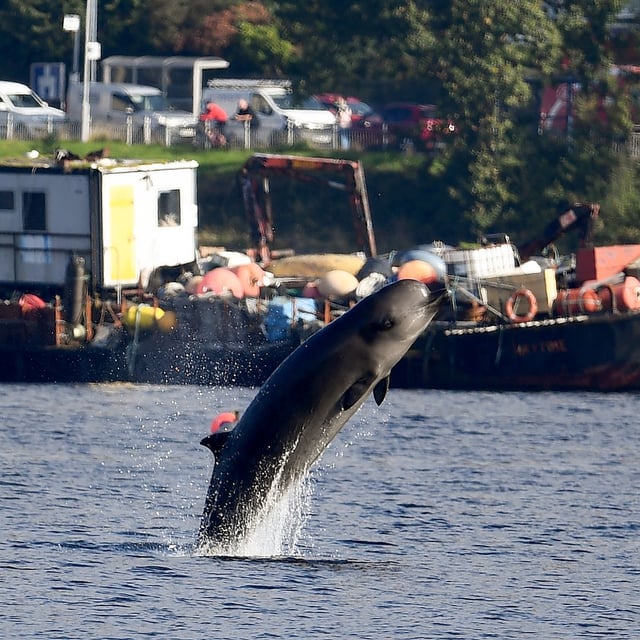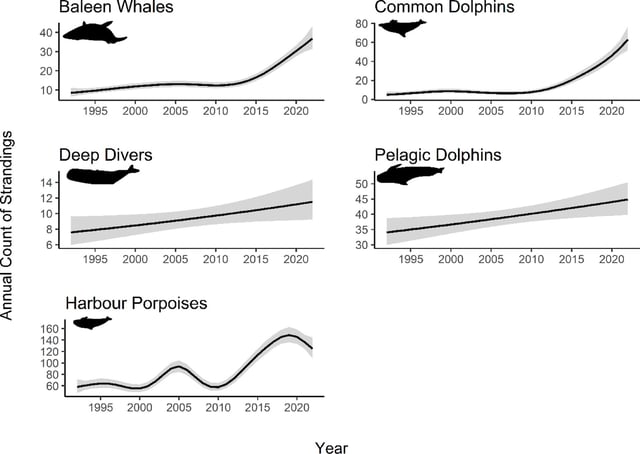Overview
- University of Glasgow scientists analyzed 5,147 strandings recorded by the Scottish Marine Animal Stranding Scheme from 1992 to 2022, publishing the results in Scientific Reports.
- Stranding rates increased across all cetacean groups, with exponential rises for common dolphins and baleen whales after about 2010 and a disproportionate impact on juveniles.
- Harbour porpoises accounted for 52% of records, followed by pelagic dolphins (24%), common dolphins (10%), baleen whales (9%), and deep divers (5%).
- Events occurred nationwide but showed regional clustering, with most species stranding on the northwest coast and porpoises concentrated along the Inner and Outer Moray Firths, Forth and Tay, and the Clyde.
- Authors note causes are not confirmed, citing likely pressures such as bycatch, entanglement, declining prey, noise, warming-driven habitat shifts, and chemical and plastic pollution, and they recommend species- and region-specific conservation.

